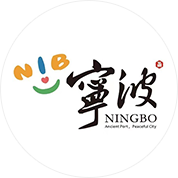"The moment a thought arises, everyone can become a sage."
Over more than 500 years of development, Yangming culture (aka Yangmingism) has become not only a treasure in the grand repository of Chinese history and culture but also a bridge for cultural exchange in today’s world.
The great Confucian scholar Wang Yangming founded Yangming Mind Learning, an intellectual tradition that has influenced the world. Although Wang Yangming never set foot on foreign soil, his thought and scholarship spread via the Maritime Silk Road to Japan, Korea, and even more distant lands across the seas.
Yangming culture has found resonance around the globe, inspiring many “foreign disciples” to devote their lives to following and venerating it.
Tracing back to its roots, we find Yuyao, Wang Yangming’s beloved hometown. Recently, reporters visited Wang Yangming’s former residence in Yuyao to retrace the footsteps of this great sage.
With its whitewashed walls, black-tiled roofs, and horse-head gables, Wang Yangming’s residence is a typical example of Jiangnan-style architecture. The sounds of home seem ever present here—this is where Wang Yangming was born, and the place he cherished most.
Amid the myriad homes along the misty waters, the heart-lamp that Wang Yangming lit has shone at the foot of Siming Mountain for over five centuries.
 The hall of Wang Yangming's Former Residence (Photo by Yuyao Cultural Relics Protection Institute)
The hall of Wang Yangming's Former Residence (Photo by Yuyao Cultural Relics Protection Institute)
Today, Wang Yangming’s former residence has become a pilgrimage site for admirers of Yangming Learning, including many visitors from Japan. Wang Yangming never travelled to Japan, so why does he have so many admirers there?
We can ask further: Who brought Yangming culture to Japan? Through what channels did it travel eastward? And what “chemical reactions” occurred after it arrived?
Chen Zhiqiang, Dean of the School of Culture and Communication at Zhejiang Wanli University and Executive Director of the Ningbo Yangming Culture Research Center, believes that studying the eastward spread of Yangming Culture should be placed in the broader context of Sino-Japanese cultural exchanges along the Maritime Silk Road and the history of Confucianism in China.
The Maritime Silk Road was not only a trade route, but also a path for the spread and fusion of culture and ideas.
As a port city, Ningbo holds a unique position in the history of exchanges between China and Japan. The monk Jianzhen stayed in Mingzhou (present-day Ningbo) before travelling to Japan. Japanese envoys to Tang China often landed in Mingzhou, then travelled northward via the Zhejiang–East Grand Canal and the Beijing–Hangzhou Grand Canal. Beyond trade, cultural exchanges also flourished in Buddhism, Confucianism, and other fields. In Wang Yangming’s era, even commoners could discuss Confucius and Mencius.
In Yuyao alone, over 300 jinshi (advanced scholars) emerged during the Ming dynasty. As a key birthplace of the Zhedong School of Confucianism in the Ming and Qing periods, Ningbo produced many great scholars, including Wang Yangming, Zhu Shunshui, Huang Zongxi, Wan Sitong, Quan Zuwang, and Shao Jinhang.
In Chen’s view, one of the shared traits between Zhedong scholarship and early modern Japanese Confucianism is the principle of “applying knowledge to governance and society” (jingshi zhiyong). Across Chinese, Japanese, and East Asian cultures, this pragmatic spirit runs deep. For Zhedong scholars, “governing the world” was never limited to the narrow role of state officials—it meant engaging with the entire realm, weighing past and present, drawing on the essence of history and culture to offer guidance for the future.

The statue of Wang Yangming in front of his former residence.
Wang Yangming was undoubtedly a “lighthouse” among them. “In the late Ming dynasty, Wang Yangming’s philosophy was immensely popular in China and had far-reaching influence in Japan and Korea,” said Zou Jianfeng, Associate Professor at the School of Humanities, Ningbo University of Finance and Economics.
How, then, did Wang Yangming’s philosophy spread and evolve in Japan? Zou Jianfeng and Dr. He Jun from Kyushu University co-edited The Collected Japanese Yangming Learning Texts (55 volumes), which systematically outlines this process.
In Japan, which was deeply influenced by Chinese culture, Confucianism was naturally absorbed and transformed.
The preface to The Collected Japanese Yangming Learning Texts notes that among the various forms of Japanese Confucianism, Edo-period Confucianism is the most valuable for study. Edo Confucianism, under new historical conditions, greatly developed Chinese Cheng–Zhu Neo-Confucianism, Lu–Wang Mind Learning, and Han–Tang classical studies, forming multiple schools including Zhu Xi Learning, Yangming Learning, and the Ancient Learning School.
Nakae Tōju is regarded as the founder of Japanese Yangming Learning. After reading the works of Wang Ji (Longxi), Wang Yangming’s eminent disciple—specifically The Sayings of Wang Longxi and The Complete Works of Wang Yangming—Nakae shifted from being a Zhu Xi scholar to a Yangming scholar. He gradually developed his Yangming-inspired ideas and wrote Dialogues with My Teacher, constructing a theoretical system centered on “bright virtue” (meide), “innate knowledge” (ryōchi), and “the great void” (taikyō), which had a major influence on the development of Yangming Learning in Japan.
Nakae Tōju died young at 41, but his disciples included the famous Kumazawa Banzan. Banzan held that to explain the true meaning of the Way, one must adapt to differences in time, place, and position—this “time–place–position” doctrine had far-reaching influence, further promoting Yangming Learning.
Yangming Learning truly flourished in Japan during the late Edo period, with Sato Issai and Oshio Heihachiro as leading figures. Sato Issai was renowned for mastering both Zhu Xi Learning and Yangming Learning. Many of his students became prominent figures, such as Sakuma Shozan, Ikeda Sōan, and Yamada Hōkoku, who advanced Yangming Learning’s influence across all social strata. Oshio Heihachiro inherited and expanded Nakae Tōju’s doctrines of “filial piety” and “the great void,” establishing the “Senshindō” private academy in Osaka to teach Yangming Learning.
In Edo Japan, Yangming Learning brought a spirit of reform, especially among the lower and middle classes. The reformist ideas and actions of modern Japanese thinkers like Yoshida Shōin and Saigō Takamori exemplify this, helping spark Japan’s modernisation and contributing to the Meiji Restoration.
Its influence persisted into modern times.

The Collected Japanese Yangming Learning Texts. (Photo by Yuyao Cultural Relics Protection Institute)
“In the early Republic of China, Sun Qiang of Fenghua, while visiting Japan, found 12 Japanese works on Wang Yangming’s thought,” recalled Gong Liefen, former deputy director of the Academic Committee of the Tianyi Pavilion Museum. “In the preface to the reprinted Collected Annotations on Wang Yangming’s Record of Teaching and Practice, Sun wrote that during his travels in Kyoto, he visited the library and found titles such as The Philosophy of the Japanese Yangming School, The True Essence of Yangming, A Discussion on the Character Formation of Wang Yangming, Steps of Yangming Learning in Spiritual Education, and An Outline of Wang Learning. He purchased all 12 works from booksellers.”
“In the great current of Sino-Japanese exchanges, Wang Yangming was like a stone dropped into water—his writings caused ripples that grew into great waves, triggering a chemical reaction in intellectual and cultural history. Yangming Mind Learning took root, blossomed, and bore fruit abroad, which in turn proves its enduring value in the modern era,” said Wang Guangsong, Associate Professor at Zhejiang Wanli University.
“Studying Japanese Confucianism, including Yangming Learning, not only deepens our understanding of Japanese thought and culture, but also broadens the global perspective on the multiple possibilities of Confucian development. This has great significance for developing contemporary Confucianism, promoting traditional Chinese culture, and advancing the global reach of Chinese civilization,” said Zou Jianfeng.
Source: Yongpai
Reporters: Huang Yinfeng, Wang Runze (intern)
Editor: Ye Ke



